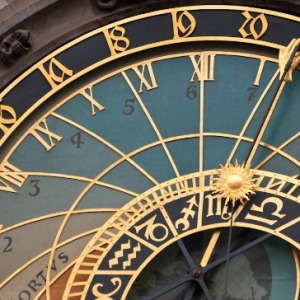Jeremy Cole
I stumbled upon an interesting theory today, which I hadn’t heard of or researched before: a supposition that the Dark Ages was not dark merely because there was so little political, cultural, archeological, scientific, etc. advancements, but rather that it’s because a period of approximately 300 years (AD 614-911) of the dark ages didn’t exist at all: A theory titled the Phantom time hypothesis.
A paper Did the Early Middle Ages Really Exist? by Dr. Hans-Ulrich Niemitz, lays out the theory (much of it originated from Heribert Illig in the early 1990s). An interesting FAQ written by Jan Beaufort rounds out some the questions. A summary and a few more bits of insight are provided by Gunnar Ries and Ruth Lelarge. The topic is also covered by a DamnInteresting post and thread of comments—some comical and some insightful. Of course any such theory is not without a lot of criticism and counterpoints, as it should have, and Phil John Kneis counters a lot of things nicely. I found the story of The Seven Sleepers of Ephesus as a potential link to possible truth of this story; not that the Seven Sleepers story was at all truth, but that in that time stories (fictions) were made up to relate truths or partial truths quite frequently.
Some of the claims made, often based at least tangentially on well-known reasons for having called them the “Dark Ages” in the first place (and in many cases refuted by others) are:
•Overall lack of reputable, accurately dated literature and historical documents from the time period.
•Much of the otherwise supporting evidence in support of the time period depending on Carbon-14 dating, which has had adjustments made in order to line up with perceived history, and which has been calibrated based on dendrochronology (tree-ring dating) which has had known flaws.
•Architectural development discontinuities; the seemingly complete stoppage of forward progress in architectural style for 300 years, with buildings known to be constructed after the Dark Ages (based on calibration backwards from modern times) compared to buildings known to be constructed before them (based on calibration forwards from ancient times) showing little or no difference.
•Farming, war, and scientific knowledge making practically no advancement during the period.
•A huge spate of forgery of official documents and religious texts otherwise before, during, and after the time period.
It’s not easy to believe one way or the other, but I personally find it not that hard to believe that three hundred years may have been accidentally or intentionally inserted into the calendar for whatever reason. Remember that calendars are man-invented tools, not scientific absolutes, and particularly the points of reference used in them are almost entirely arbitrary. It wouldn’t change our daily lives1 in any way if the actual number of years having passed since the Roman empire was closer to 1700 than 2000. We’ve made a lot of adjustments to the calendar, and even switched points of reference and entire ways of counting several times during man’s history. Even today, not everyone uses the same calendar or agrees on the calendar.2
It’s easy to misinterpret the meaning of “missing years”, and it seems like many comment authors on the various articles have made the mistake of thinking that Illig and Niemitz are suggesting that the years themselves didn’t exist, which of course is nonsense. The only claim being made is that three centuries of already-sketchy history may have just been fabricated entirely, an offset to the calendar was introduced intentionally or not, and as a result of that, we’ve been mis-numbering years for the 1100 years following that.
If true, there would be no need to correct the current calendar date, just to note in history books, elapsed-time calculations involving the past and including those years, and other places that there is a gap. There are already other gaps in the Gregorian calendar, this would just be the largest.
What do you think? Do you find it plausible? Should I be signing this post January 2, 1714? If true, I guess that gives us an extra 298 years before we the Mayan-predicted end-times in 2012, so that’s a bonus!
1 With the possible exception that some churches, and some acts of various churches, may be on slightly shakier footings, especially if it could be proven that they had been maliciously involved in the fabrication of the calendar.
2 See Wikipedia’s List of calendars and Calendar pages for a few points of study. In addition to our Gregorian calendar, at least the Hebrew and Chinese calendars are still in widespread use.
….
Taken from: http://blog.jcole.us/2011/01/02/are-we-really-living-in-the-1700s/

